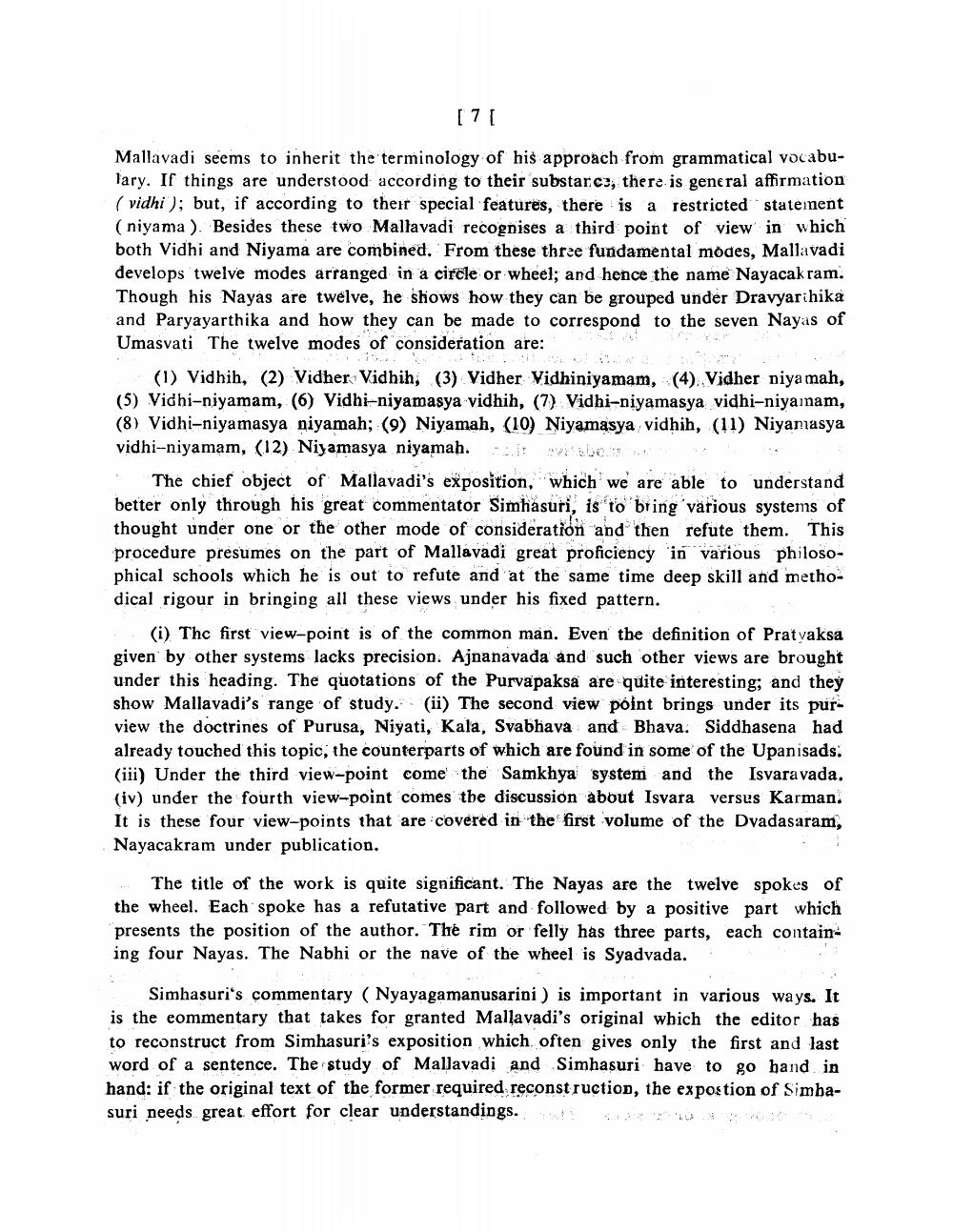________________
[7[
Mallavadi seems to inherit the terminology of his approach from grammatical vocabulary. If things are understood according to their substance, there is general affirmation (vidhi); but, if according to their special features, there is a restricted statement (niyama). Besides these two Mallavadi recognises a third point of view in which both Vidhi and Niyama are combined. From these three fundamental modes, Mallavadi develops twelve modes arranged in a circle or wheel; and hence the name Nayacak ram. Though his Nayas are twelve, he shows how they can be grouped under Dravyar hika and Paryayarthika and how they can be made to correspond to the seven Nayas of Umasvati The twelve modes of consideration are:
(1) Vidhih, (2) Vidher Vidhih, (3) Vidher Vidhiniyamam, (4) Vidher niya mah, (5) Vidhi-niyamam, (6) Vidhi-niyamasya vidhih, (7) Vidhi-niyamasya vidhi-niyamam, (8) Vidhi-niyamasya niyamah; (9) Niyamah, (10) Niyamasya vidhih, (11) Niyamasya vidhi-niyamam, (12) Niyamasya niyamah. It aviabe
The chief object of Mallavadi's exposition, which we are able to understand better only through his great commentator Simhasuri, is is to br bring various systems of thought under one or the other mode of consideration and then refute them. This procedure presumes on the part of Mallavadi great proficiency in various philosophical schools which he is out to refute and at the same time deep skill and methodical rigour in bringing all these views under his fixed pattern.
(i) The first view-point is of the common man. Even the definition of Pratyaksa given by other systems lacks precision. Ajnanavada and such other views are brought under this heading. The quotations of the Purvapaksa are quite interesting; and they show Mallavadi's range of study. (ii) The second view point brings under its purview the doctrines of Purusa, Niyati, Kala, Svabhava and Bhava. Siddhasena had already touched this topic, the counterparts of which are found in some of the Upanisads. (iii) Under the third view-point come the Samkhya system and the Isvaravada. (iv) under the fourth view-point comes the discussion about Isvara versus Karman. It is these four view-points that are covered in the first volume of the Dvadasaram, Nayacakram under publication.
The title of the work is quite significant. The Nayas are the twelve spokes of the wheel. Each spoke has a refutative part and followed by a positive part which presents the position of the author. The rim or felly has three parts, each containing four Nayas. The Nabhi or the nave of the wheel is Syadvada.
Simbasuri's commentary (Nyayagamanusarini) is important in various ways. It is the commentary that takes for granted Mallavadi's original which the editor has to reconstruct from Simhasuri's exposition which often gives only the first and last word of a sentence. The study of Mallavadi and Simhasuri have to go hand in hand: if the original text of the former required reconstruction, the exportion of Simbasuri needs great effort for clear understandings.




